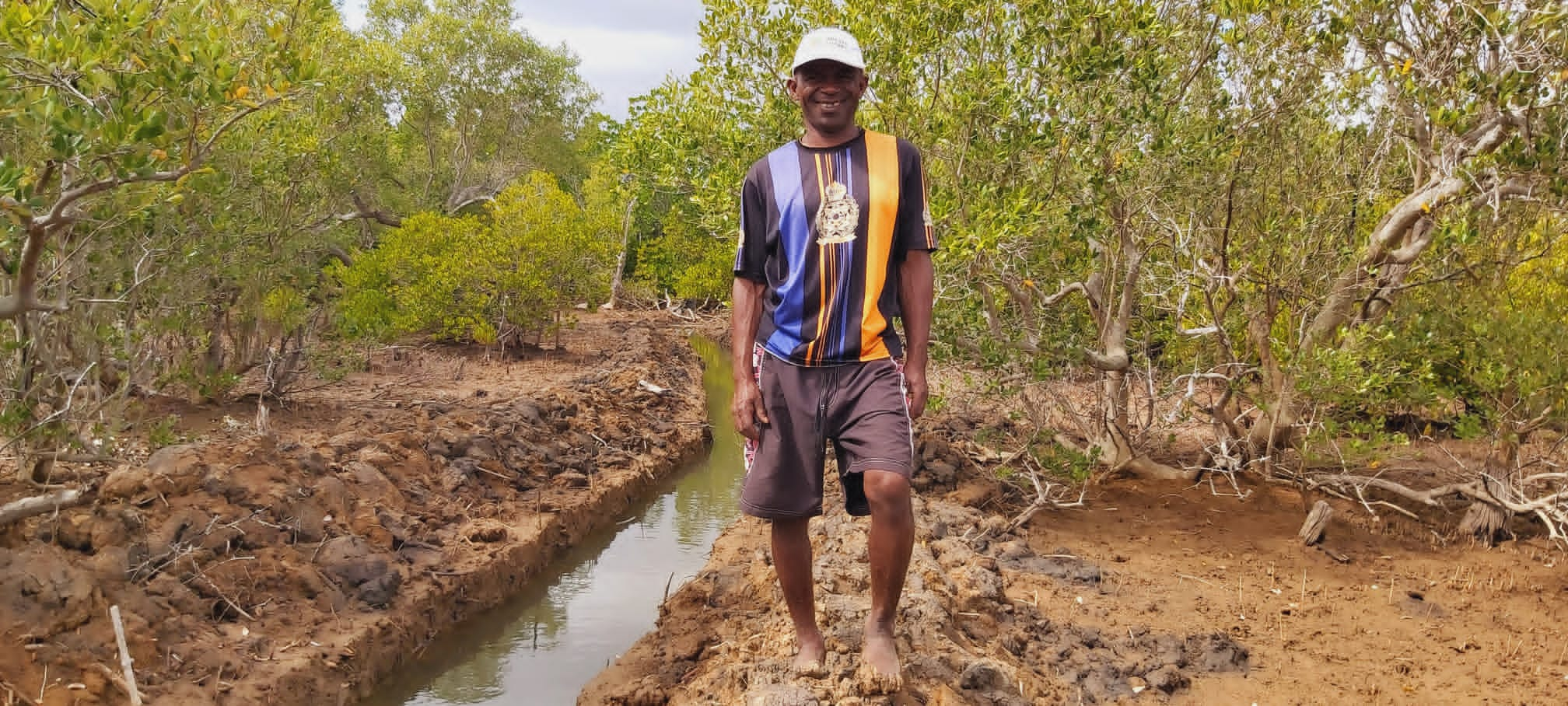Preparatory meeting, mobilization of the community and implementation
Excavation work of tidal water channels by the local community.
Noel Randrianarivelo
Final channel system.
Noel Randrianarivelo
Excavation work of tidal water channels by the local community.
Noel Randrianarivelo
Prior community meetings were organized in the neighbouring village to raise awareness about the importance of mangrove restoration. During these meetings, the community was informed of the principles of the resoration method and the steps involved. Since mangrove restoration does not require any particular technical expertise (know-how), the entire community was targeted (women, men and youth) and mobilized for further actions. Furthermore, local authorities, state technical services, as well as administrative authorities were also involved, so that the method could easily be replicated elsewhere.
In-depth discussions with the local community and technical experts were crucial for a suitable design of the channel system in this area. The channel was dug according to the local topographic context, i.e. depth of the channel, angle of channel site, length, starting point, etc.
(1) 50 members of the local community were mobilized to dig the channel; (2) An area of 40 ha of degraded mangroves was identified (3) A channel system with a total length of 2200 m was dug to promote the natural recolonization in the degraded areas.
To motivate the different community groups (women, men and youth) for the restoration work, their interests must be considered. Furthermore, their future benefits (ecosystem goods and services) must be discussed in an understandable and participatory way. This, most importantly, includes food security and income generation.
